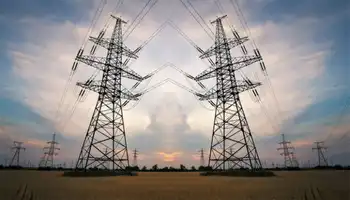Wind gets clean bill of health
By Toronto Star
CSA Z462 Arc Flash Training - Electrical Safety Essentials
Our customized live online or in‑person group training can be delivered to your staff at your location.

- Live Online
- 6 hours Instructor-led
- Group Training Available
But the independent expert panel that prepared the wind-industry study conceded that some people can get stressed out by the "swishing" sound wind turbines often make.
"A small minority of those exposed report annoyance and stress associated with noise perception," the panel concluded, pointing to similar annoyances that can come from highway or city traffic, local industry and airplanes. "Annoyance is not a disease."
New Ontario rules require all wind turbines to be set back at least 550 metres from the nearest residence to assure noise levels do not exceed 40 decibels. That's less than the noise that comes from light car traffic on a residential street, but some say it's not enough.
The 85-page study, commissioned by the Canadian Wind Energy Association and American Wind Energy Association, is bound to be dismissed by wind critics as more industry-funded propaganda. But the seven academic and medical experts who conducted the analysis say they were completely independent in reaching their conclusions.
"We were not told to find anything," said panel expert David Colby, officer of public health in Chatham-Kent and a professor of medicine at the University of Western Ontario. "It was completely open ended."
Among their findings:
Symptoms from what some call "wind turbine syndrome" are no different than symptoms observed in the general population from the day-to-day stresses of life. These symptoms include headaches, insomnia, anxiety, dizziness, and ringing in the ears.
All survey-based studies designed to support the existence of wind turbine syndrome are not scientifically valid because they have no control group – those who participate are self-selected and at risk of bias.
The low frequencies and very low-frequency "infrasound" that wind turbines give off are all around us, whether from outside traffic, the appliances that operate in our homes, the beating of our own hearts, or the wind itself. They are not unique, and do not pose a risk to human health.
Colby said the evidence was so scant that the wind associations have been unable to convince government agencies to do their own studies. It's no surprise, he said. "Why would we waste money on doing studies to further examine this?"
But Ellen Michelson, a federal Green Party candidate for central Toronto, said the small group of people with concerns shouldn't be so easily dismissed. Admittedly pro-wind, Michelson spent a week last month living near a wind farm in Norfolk County and said she could occasionally hear the wind turbines.
It didn't bother her. "I slept like a baby," she said. At the same time, she sensed that people were mostly stressed because of their lack of control.
Colby agreed that lack of control could trigger stress, but a line must be drawn somewhere.
"You can't control the amount of cars going by and wind turbine noise is generally quieter than highway noise."
The panel included Robert Dobie, a doctor and clinical professor at the University of Texas, Geoff Leventhall, a noise vibration and acoustics expert in the United Kingdom, Bo Sondergaard, with Danish Electronics Light and Acoustics, and Michael Seilo, a professor of audiology at Western Washington University.
Also on the panel was Robert McCunney, a scientist in the department of biological engineering at the Massachusetts Institute of Technology, who took issue with claims that low-frequency sounds from turbines can cause vibrations that impact health. "It doesn't really have much credence, at least based on the literature out there," he said.
The study also explored the power of suggestion, and how the media's coverage of alleged wind-turbine sickness can create "anticipatory fear" in affected communities.
Robert Hornung, president of the Canadian Wind Energy Association, said the expert panel is expected to submit the paper this year for publication in a peer-reviewed journal.











